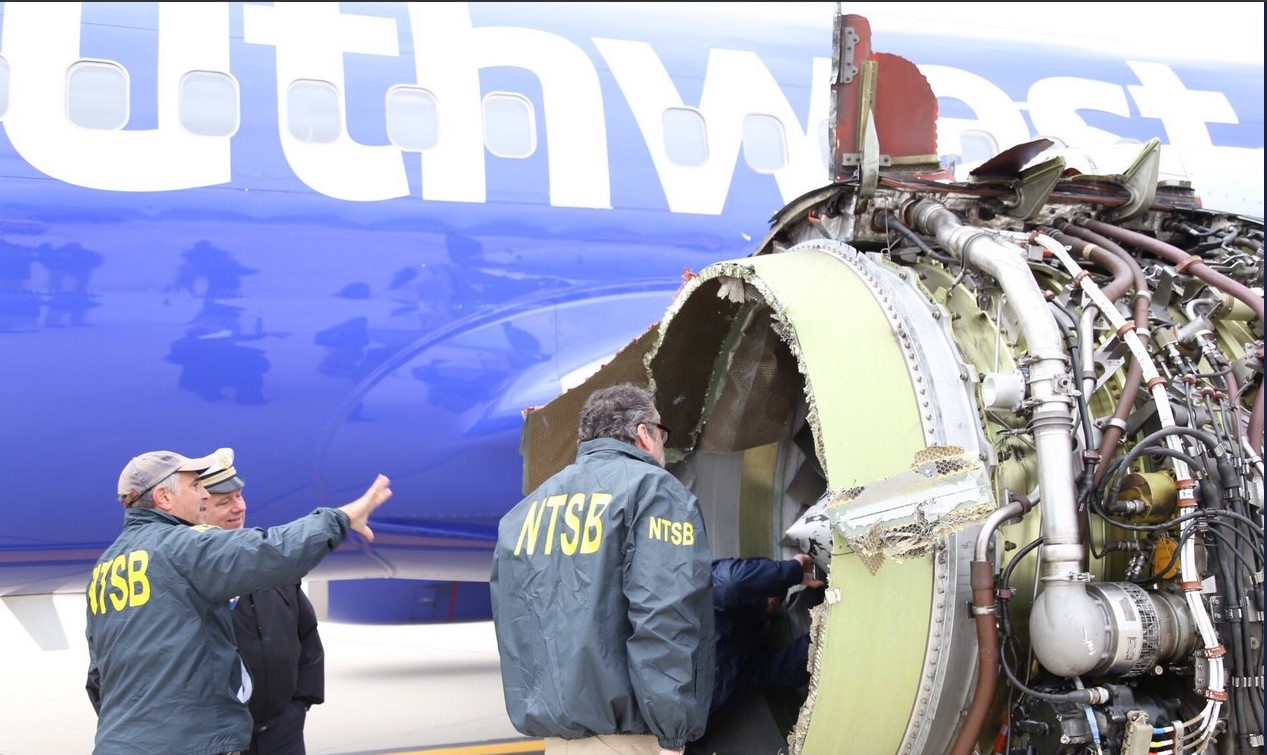Engines similar to one involved in a deadly incident on a Southwest Airlines flight between New York and Dallas will be subject to a new regime of checks within weeks.
The US Federal Aviation Administration said Wednesday it would issue an airworthiness directive within the next two weeks requiring inspections of certain CM56-7B engines.
Engine maker CFM said after Tuesday’s shock engine failure that the CM56-7B had powered about 6700 planes worldwide since entering service in 1997 and had compiled “an outstanding safety and reliability record”.
WATCH Spectacular Landing and Take-off video
The FAA said the directive would require an ultrasonic inspection of fan blades when they reached a certain number of landings and take-off.
“Any blades that fail the inspection will have to be replaced,’’ it said without specifying the number of cycles or how many engines would be involved.
Southwest, which had a similar engine incident in 2016, had already announced an accelerated its fan blade inspection program and expected it to be completed within 30 days.
A 43-year-old mother of two was killed when she was partially sucked out of window that had been broken by shrapnel from the engine. Passengers managed to drag the woman back inside but she died of injuries.
The plane diverted to Philadelphia where it made an emergency landing.
Read: Fan blade missing in SouthWest Airlines engine involved in shock passenger death.
The AD comes after NTSB chairman Robert Sumwalt revealed that a fatigue crack believed to have initiated the engine failure was on the inside of the number 13 fan blade and not detectable by looking at the component from the outside.
Sumwalt said the blade separated in two places with the fatigue fracture at the hub holding all 24 blades and the second fracture halfway along.
“But it appears that the fatigue fracture was the initiating event which later caused that secondary failure,’’ he said.
The NTSB chief said investigators had the root of the blade, but not the rest of it, and it was too early to tell whether it was a pre-existing anomaly such as a manufacturing fault.
Asked whether there was a broader flaw with 737 engines, Sumwalt said investigators wanted to carefully understand what had happened at Southwest.
“As I mentioned a few minutes ago I’m very concerned about this particular event,”’ he said. “To be able to extrapolate that to the entire fleet, I’m not willing to do that right now.
“We need to understand what happened here.’’
Sumwalt said that if the NTSB had the capability to issue urgent safety recommendations if it believed there was a deeper issue.
“We’re not doing that tonight because we don’t fully have all the facts surrounding this,’’ he said. “But I will say the CFM56 engine is a very widely used engine and it’s got a great record generally speaking.’’
Pieces of engine cowling — the exterior engine covering — have been found 65 miles north-west of Philadelphia and the NTSB is hopeful other parts may be found.

Sumwalt also revealed in his briefing the plane rolled sharply to the left after the trauma and reached a 41-degree bank angle but this was quickly corrected by the pilots.
He said there was “a fair amount of vibration’” during the 22 minutes between the initial event and touchdown at Philadelphia.
A decision by the flight crew to land with a flaps setting at 5 because of concerns about aircraft controllability meant the aircraft touched down at about 165 knots (190mph) compared to a typical 737 approach speed of around 135 knots.
Among the many issues investigators are probing is how the window failed.
Although the assumption in new reports is that it was shattered by shrapnel, Sumwalt said no window materials had been found inside the aircraft.
























